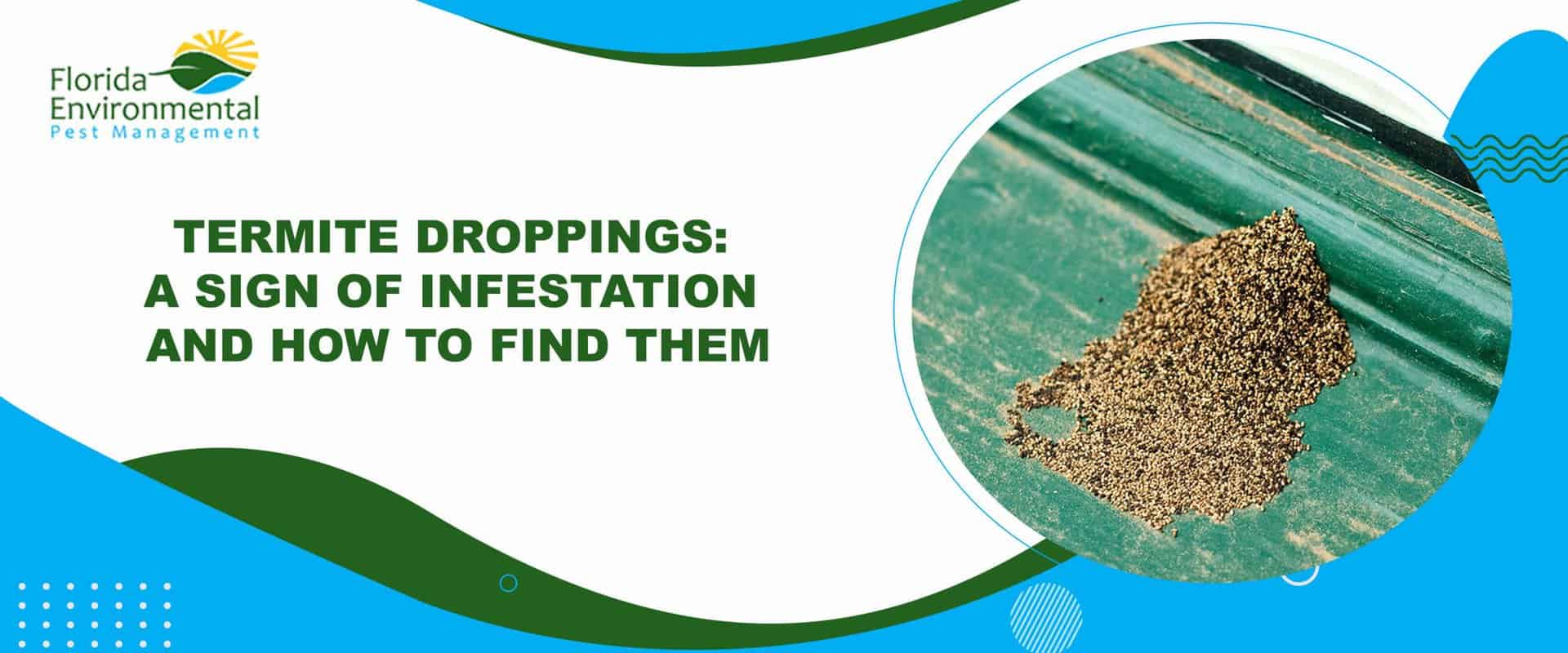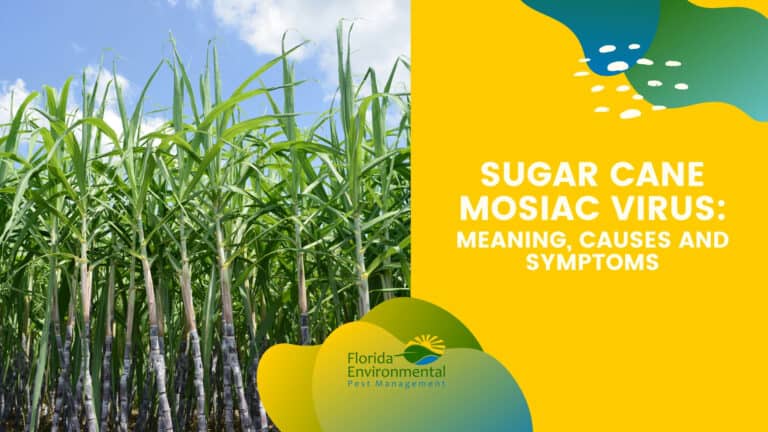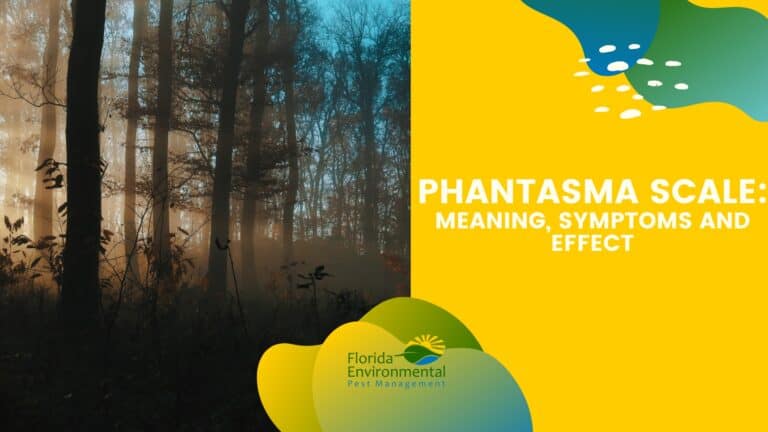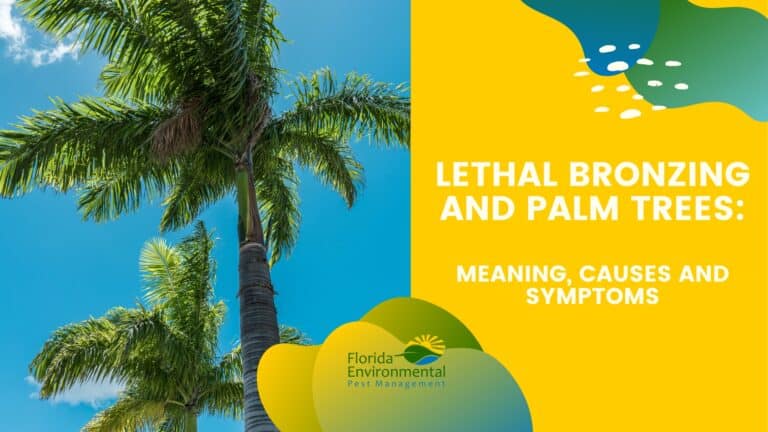Every homeowner in Florida has a fear of termites. This anxiety can be alleviated with some understanding of termites. Spotting an infestation doesn’t have to be when a floor collapses or you see a termite scurrying on the floor. There are signs, such as termite droppings, to look for regularly. So let’s take a look at how you can keep an eye out.
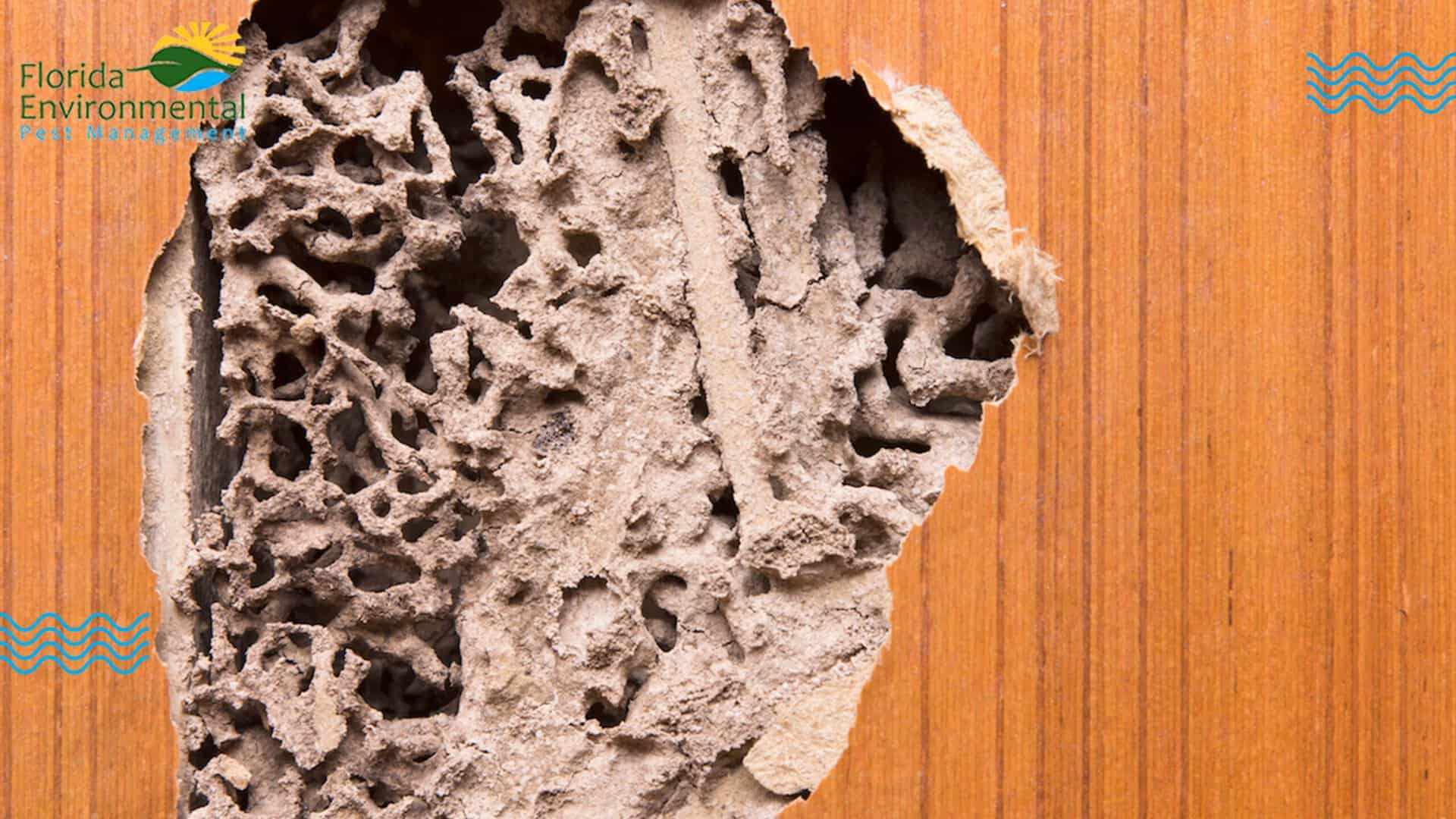
How To Identify Termite Infestations?
Routine checks around the home are an excellent practice to stay on top of termite infestation or any pest problems around the year. If you want to know what to look for, keep your eye out for:
- What looks like water damage
- Termite frass or mud tubes, common types of termite droppings
- Termite wings
Suspected Water Damage
The most common sign of water damage is warped wood, a common sign of termites. Termites produce moisture as they eat away at the wood. The moisture causes its warping that mimics water damage. This is especially true around doors and windows. At the first moment you suspect water damage, call someone for an inspection.
Termite Frass
Termite frass is drywood termite droppings that look like sawdust. It is effortless to mistake it for sawdust, especially in a workroom used for wood projects. Drywood termites love those kinds of rooms and are drawn to wood shavings left strewn about. Thus, making the termite feces easy to blend in with the surroundings. A best practice is to keep your workroom clean in between the time you are in there working. If you notice sawdust when it should be clean, then you know that drywood termites are visiting you.
Mud Tubes
Mud tubes are the termite poop for subterranean termites. These tubes of termite waste are connected from soil to food sources and are used for traveling. They are always attached to structures and are usually on the foundation. The termite tunnels have been found on wooden window sills and along door jambs. They are also found near woodpiles that are located up against a home.
Termite Wings
One of the earliest signs of termite infestation is discarded wings on the floors. The first hint of infestation is swarms of flying termites near a food source. Male termites toss wings once they find a mate. So when you see wings scattered around an area, you know that termites are reproducing and contributing to the swarm. A major red flag to be aware of!
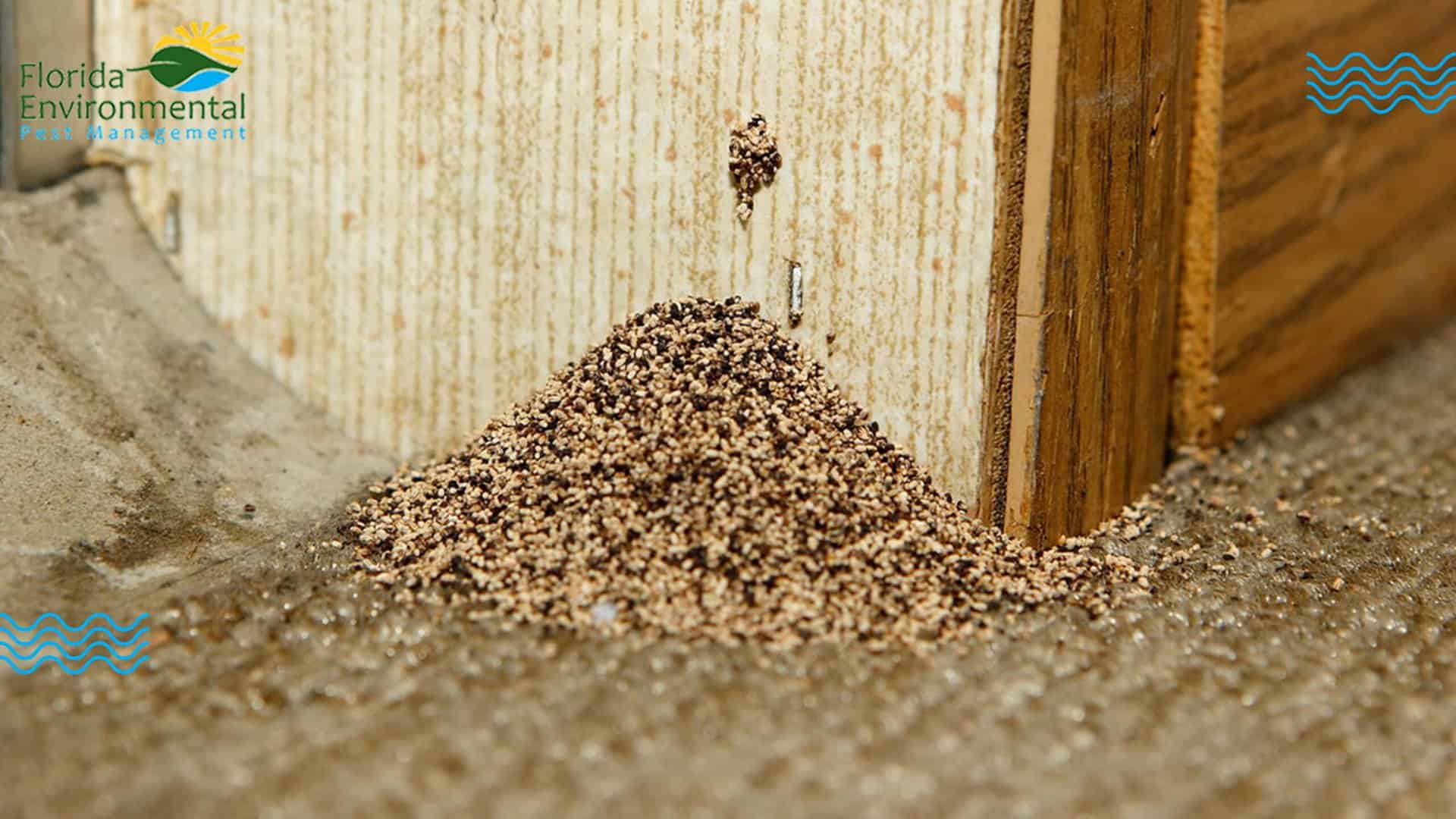
What Do Termite Droppings Look Like?
Every species of animal has a particular “look” when it comes to its waste. It may be noticed because of the quantity, color, and shape. Fecal matter is afected by diet and animal size. Let’s take a closer look at termite droppings identifiers.
Termite Droppings Color
The color of the termite pellets is related to the type of wood they have been eating. Most often, it falls in the range of light beige to black. However, they are tiny and can sometimes consist of multiple colors. When the swarm is eating from several types of wood, it will often look like salt and pepper. Or some variation. This does not include subterranean termites, who use termite frass for mud tubes.
Carpenter Ant Droppings vs. Termite Droppings
Carpenter ant droppings and drywood termite pellets look a lot alike, like sawdust. However, there are variations between the two. Firstly, carpenter ant droppings are bulkier and larger. They are also likely to contain parts of ants they have eaten.
It is also important to note the location of the droppings. Termites tend to dispose of their waste inside holes in the wood. Carpenter ants will leave them around the entry into their nests.
Do Termites Leave Sawdust Behind?
The technical answer is no. While termite pellets consist of waste from wood, it is still waste. Most people think they leave it behind because termite poop looks like sawdust.
Which Other Insects Create Sawdust?
If you think termites and carpenter ants are the only animals creating frass that looks like sawdust, you are incorrect. Carpenter bees and wood-boring beetles can also make piles of sawdust. The most significant difference here is that carpenter bees leave actual sawdust rather than excrement. This is because they do not eat the wood they are borrowing in. Instead, they chew the wood to burrow into and spit the timber back out.
Are Termite Droppings Bad For Your Health?
When learning that a termite infestation can leave you with quite a bit of termite pellets, one usually has concerns for their health. After all, we know that other insects and pests can bring disease. Fortunately, there is no cause for concern over illness to you or your pets. Termites eat cellulose which does not turn into diseased termite poop.
This does not mean it won’t have an impact on your health. Termite droppings are small and delicate, like dust. It can lead to allergic reactions and asthma attacks. If you have specific allergies or breathing issues, this can be exacerbated by a termite infestation.
How to Prevent Termites?
If you have had an inspection and been cleared for termites, there are preventative measures you can take.
Check For leaks
Termites love moisture and damp areas. Subterranean termites cannot survive without a water source. Create a routine to check for leaks so that you can resolve that issue quickly.
Clean Gutters
Termites seek out warm, dark, soggy spots to live in. By cleaning your gutters, you make your home a little less attractive to termites.
Fill In Cracks And Crevices
Any cracks and crevices, especially in a joint or place of division, should be filled in. They will often use these spaces to scope out food sources and gain access to inner woodwork.
Find A New Place For Kindling
Plenty of homes across the United States has kindling and firewood up against the house. We are here to tell you that it’s not good practice if you don’t want termites. Subterranean termites love these situations and will gain access to your home at the foundation. It is far better to put your wood away from the house in its shed.
This also means that you should not leave large pieces of wood and tree stumps in your yard. Once you have a giant beacon left out, the termites will find it.
Be Careful With Mulch
If you are using wood mulch, consider some other options. Wood mulch is like a buffet for termites. Not only does it provide a food source, but it can also provide a home and access to your home. If you can, use other materials for mulch.
Get Regular Inspections
The most important and most beneficial thing you can do is to set up regular inspections. Our team at Florida Environmental would much rather come and inspect your home rather than you having to struggle with an infestation. Call us today to learn more about how to get this type of service set up for your home.

